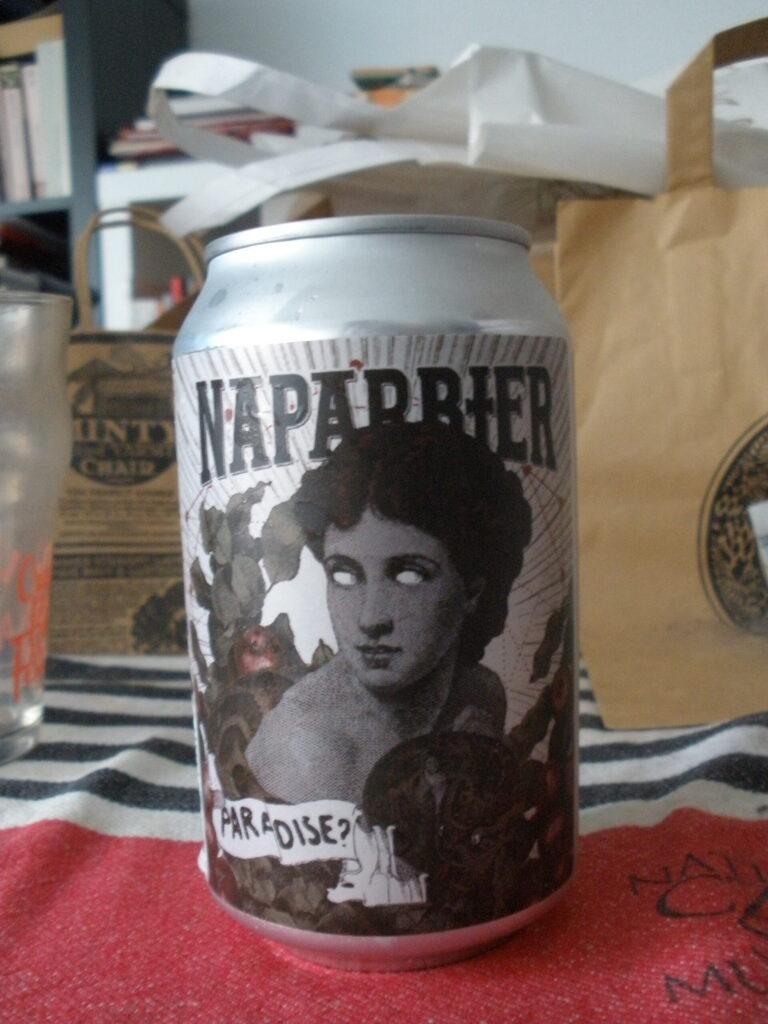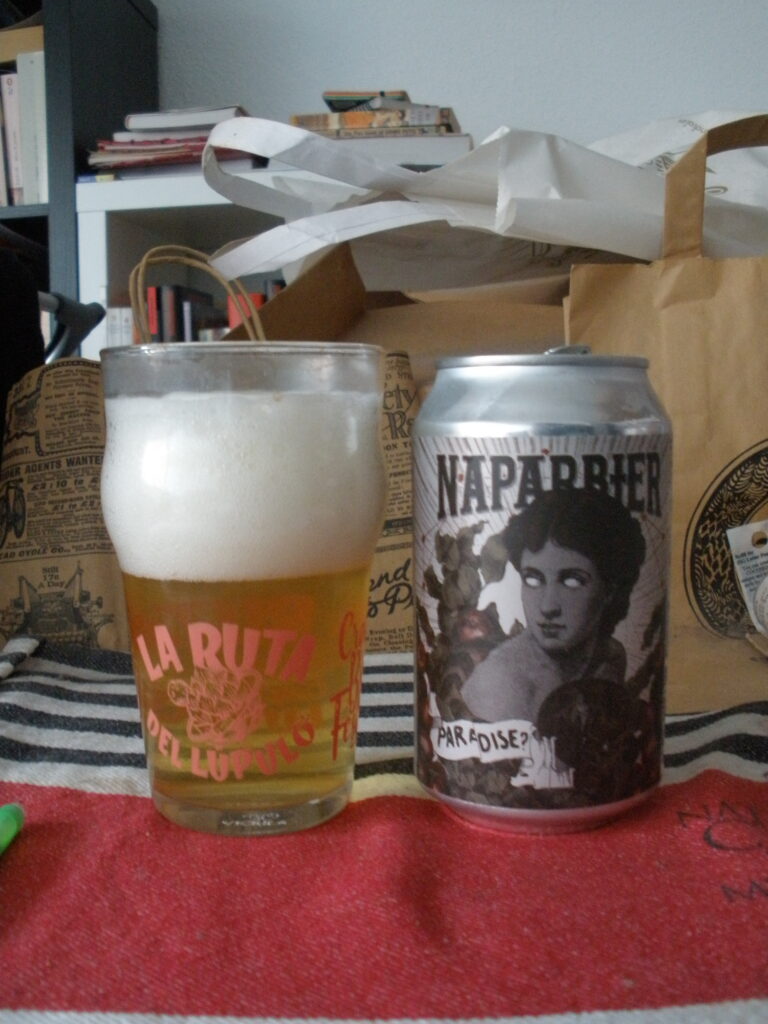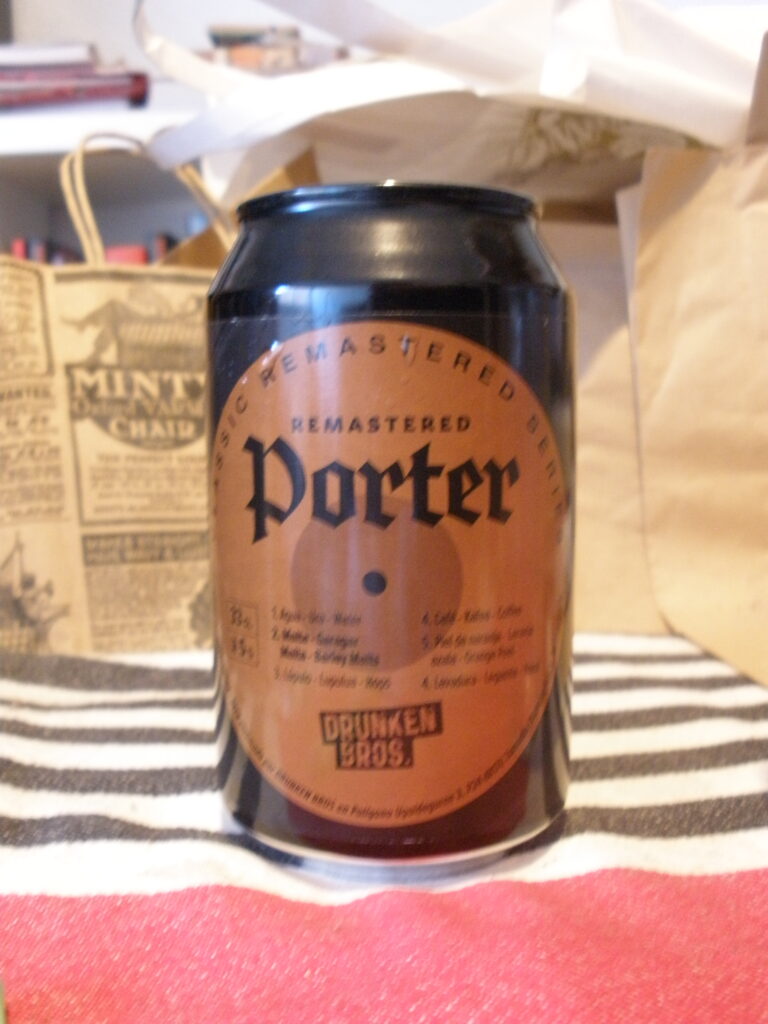heavenly day
As it’s unseasonably warm, I don’t have much against having those beers that aren’t as usual for me. Lighter, fresher, less soothing, pleasers of the masses, German pilsners. It is Naparbier, though, so at least I can be sure it’s quality, even if Spanish pilsners are always something of a risk. But, sometimes you need to take a risk to get to Paradise!

It’s extra light and extra foamy, filling half the glass with head on the first pour. The color is just barely yellow and crystal clear. There’s something a little reminiscent of the coast in the aroma, some salty sea air. But it’s heavier on the field, grain and grass. It feels light and creamy, with a little less bitter than you expect in a pilsner. It’s not that weird for Spanish ones, though. There’s a good amount of lemony citrus, so in keeping with German possibilities. It’s a very clean and summery beer too, with little to no aftertaste, easy to have a few of before you know it on a warm afternoon. It’s not quite summer yet, but spring has arrived with a vengeance.

Supplier: Labirratorium
Price: €2.60

















